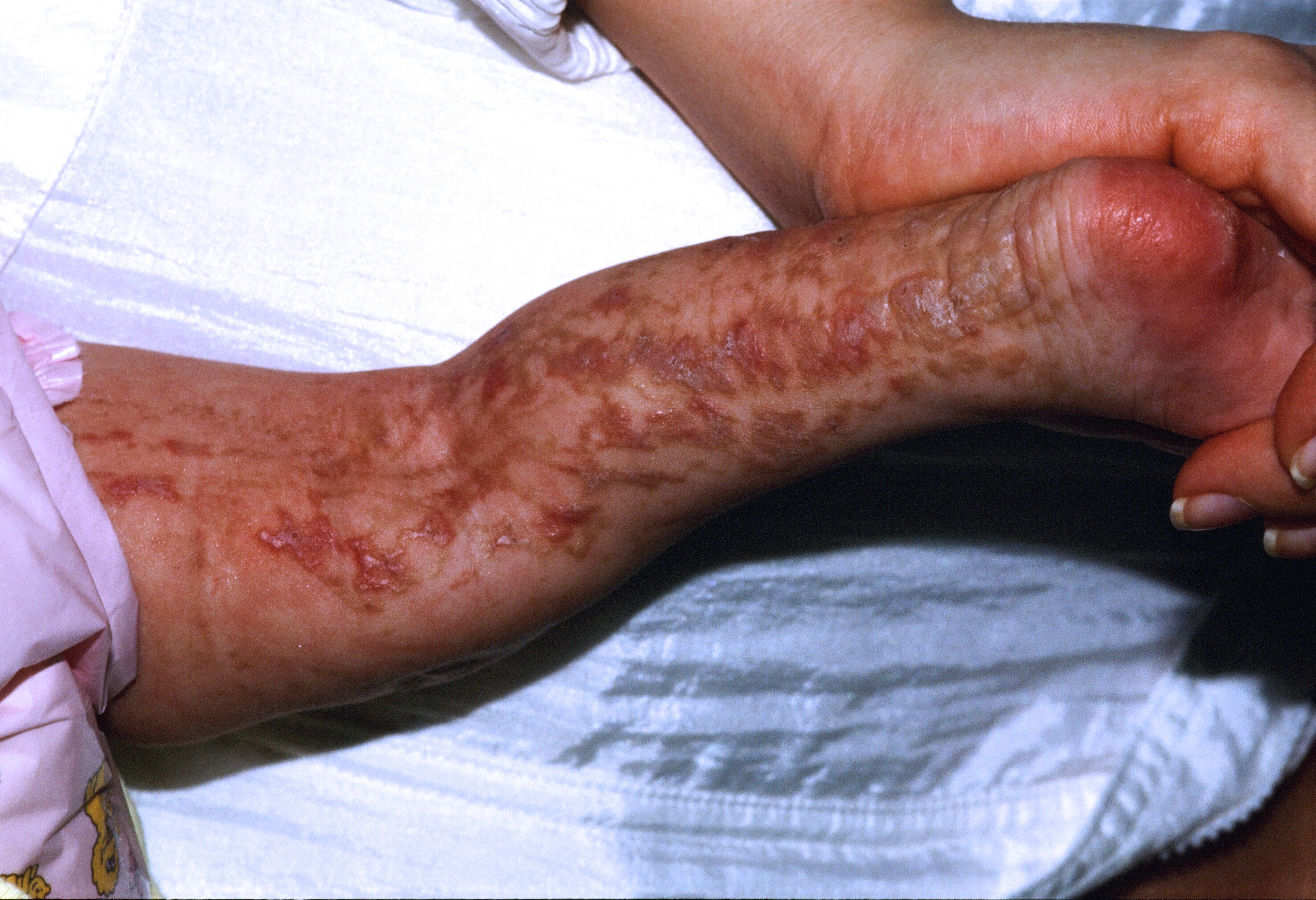 Newborn female with this.
Newborn female with this.Incontinentia pigmenti (IP) is an uncommon X-linked dominant disorder, lethal in the majority of affected males in utero and variably expressed in females. Some males affected with IP have Klinefelter's Syndrome (47, XXY), but many do not. Some of these males whose karyotype is normal may have a limited form of the mutation that occurred postzygotically.
Female infants are affected first by erythematous, vesicular linear lesions, and then by hyperkeratotic linear plaques, which finally resolve leaving linear and reticulated hyperpigmentation. There may be significant peripheral eosinophilia as seen on a CBC. Subungual hyperkeratosis and tumors may appear, usually after puberty, from 15-25 years of age, but as late as 45 years. A large keratotic mass displaces the nail and destroys the distal phalanx. They can easily be confused with subungual warts. Histology of the lesions has shown a KA or SCC-like histology. Sometimes, radiographs show scalloped bone lesions.
Late recurrences of first-stage inflammatory vesiculobullous lesions of incontinentia pigmenti are uncommon but have been reported to occur in the setting of infections, fevers, and vaccinations, including hand, foot and mouth disease.
Multisystem defects occur with preference for the musculoskeletal system, brain (e.g. epilepsy, mental retardation, hemiparesis and spasticity), eyes (e.g. cataracts, strabismus, nystagmus, optic atrophy, retinal detachment, retinal arteriolar occlusion, subsequent neovascularization and retinal infarction), hair and teeth.
Subungual keratotic, verrucous nodules involving the distal nail bed and hyponychium occur in IP. X-ray shows punched out areas of radiolucency in the distal phalanges. They are seen in 10-25% of teenage girls with IP.
Patients may have small teeth or few teeth.
A skin biopsy showing a blister with eosinophils in the appropriate clinical setting is diagnostic but in general, the diagnosis is made clinically.
Multisystem defects occur with preference for the musculoskeletal system, brain (e.g. epilepsy, mental retardation, hemiparesis and spasticity), eyes (e.g. cataracts, strabismus, nystagmus, optic atrophy, retinal detachment, retinal arteriolar occlusion, subsequent neovascularization and retinal infarction), hair and teeth.
Homepage | Who is Dr. White? | Privacy Policy | FAQs | Use of Images | Contact Dr. White